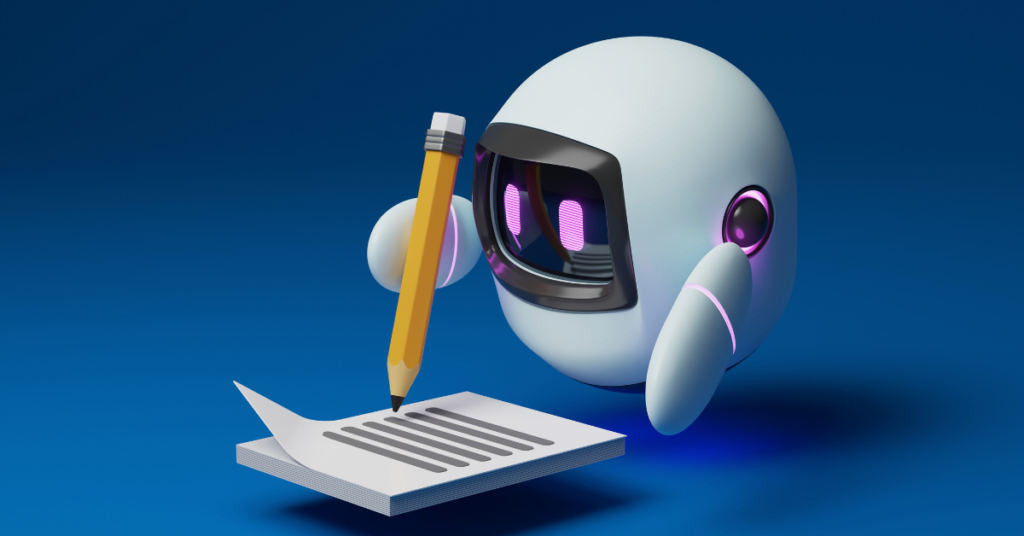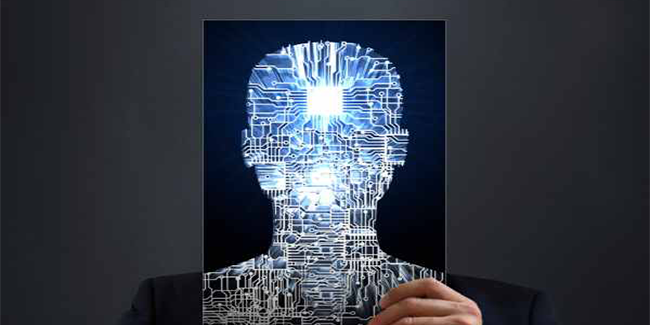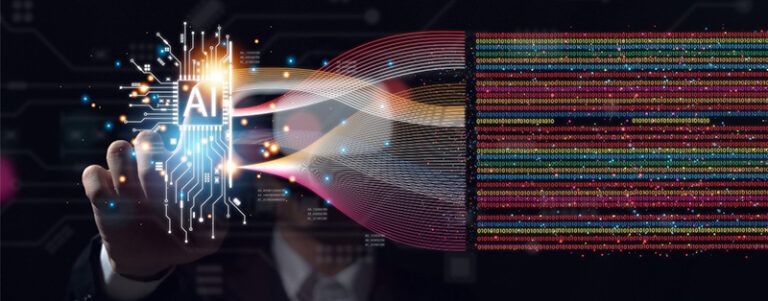How to Identify AI-Generated Content: Top 4 Ways That Help

Generative Artificial Intelligence (AI) models are a significant technological milestone. They help with content creation and improve human text quality. However, they also pose several risks, like fake news, image circulation, and more cyberattacks and data leaks. There have even been instances when generative AI has produced socially biased content. Therefore, using this technology responsibly has become extremely crucial, bringing us to the question: How to identify AI-generated content?
This blog explains the following:
- How Can I Determine if a Piece of Content Has Been Generated by AI?
- What are the Key Indicators of AI-Generated Text?
- Are There Specific Tools or Techniques to Detect AI-Written Content?
- How Does AI-Generated Content Differ From Human-Written Content?
- How to Identify AI-Generated Art?
- FAQs on How to Identify AI-Generated Content
How Can I Determine if a Piece of Content Has Been Generated by AI?
 Natural Languagе Gеnеration (NLG) algorithms offer the potential to generate written content that resembles human language, while Generative Adversarial Networks (GANs) have the capability to produce impressive visual art and videos. However, spotting AI content is still a possibility with the following ways to identify machine-generated content:
Natural Languagе Gеnеration (NLG) algorithms offer the potential to generate written content that resembles human language, while Generative Adversarial Networks (GANs) have the capability to produce impressive visual art and videos. However, spotting AI content is still a possibility with the following ways to identify machine-generated content:
1. Uniform Writing Style
AI-generated content usually follows a uniform pattern or adds the same phrases, which is missing in human text. For example, ChatGPT’s response to the benefits of transformational leadership repeats ‘transformational leaders’ several times.
2. Use AI Detection Tools
Tools like Copyleaks and GPTZero help distinguish human-written from AI-written content, thus answering the how to identify AI-generated content question.
3. Check Citations
Another way in the list of how to identify AI-generated content, especially in research and academic papers, lies in checking the citation. This is because AI tools mostly offer wrong or random citations.
4. Lack of Context
Human writers create relevant content focusing on the objective, target audience, and desired tone.
AI content, on the other hand, is often generic and does not focus on a specific audience. In the image below, ChatGPT answer comprises a mix of various financial skills like budgeting and debt management, and personal financing tips like credit monitoring and practicing frugality instead of focusing solely on how to develop financial skills.
ALSO READ: What is ChatGPT? Top Capabilities and Limitations You Must Know
What are the Key Indicators of AI-Generated Text?
AI models are becoming increasingly complex. Needless to say, this has made distinguishing human-written from AI-written content difficult. However, the following key indicators can help detect AI-generated text:
1. No Surprise Element
AI writing tools usually gather online information and paraphrase it to form consistent and predictable sentences. On the contrary, human writing comprises varying styles, tones, and expressions to engage the readers.
2. Generic Information
One of the best ways of spotting artificial intelligence-crafted text is to look for generic information easily available on the Internet. Quality human text comprises insights, statistics, and facts to support the arguments.
3. Flawless Writing
If you find zero typos or grammatical errors in a writing piece, chances are that it is AI-generated. Moreover, AI-generated content may also have an extremely fancy vocabulary with too much jargon. It is thus possible to detect AI-generated text in the event of such kind of copy.
4. Repetitive Content
AI tools often offer irrelevant or repetitive information, making it easy for you to detect AI-generated text.
Are There Specific Tools or Techniques to Detect AI-Written Content?
Yes, you can use various AI-detector tools for spotting artificial intelligence-crafted text. Some of the most popular tools are:
How Does AI-Generated Content Differ From Human-Written Content?
People are fond of stories. Notably, the audience connects with content creators through anecdotes and learnings—whether it be through blogs, art, or leadership posts. However, generative AI shares made-up stories and quotes that lack human emotion.
Moreover, from an academic perspective, AI-generated content is less complex than human-written content. AI also uses fewer lines per paragraph and writes shorter sentences. Humans frequently use punctuation like question marks, colons, and semicolons. On the contrary, AI-generated content mostly comprises single quotation marks.
ALSO READ: How to Use ChatGPT in Effective Ways for Your Career in 2023
How to Identify AI-Generated Art?
Research claims that AI has the power to replace traditional art techniques and diminish the value of human artists. Therefore, professionals must learn how to identify AI-generated content and images.
1. Textured Backgrounds
AI images either have a rough or extremely smooth texture. You can identify them by blurred background objects or pixelated reflections.
2. Airbrushed Images
AI-generated images appear too smooth or blurred and have random brush strokes across the image.
For example, Amnesty International used the below AI-generated image to highlight the 2021 Columbia protests, for which they were criticized. Unnaturally smooth faces and a blurred flag indicate an AI-generated image.
Source: The Guardian
3. Distorted Human Features
Another great way to detect AI images is to check unnatural or poorly drawn human features, especially hands, smiles, and eye gazes.
4. Watermarks
Most AI image-generating tools add watermarks (a small logo, image, or text to mark the source) to images, for easy identification of AI-generated content.
In a welcome move, Google, OpenAI, and other AI companies have pledged to watermark AI-generated images for easy detection.
5. Lack of Creativity
AI generates art as per existing data or predetermined algorithms. It lacks creativity and artistic depth, unlike human art which seeks inspiration from life experiences and creativity. Moreover, most AI-generated images follow the same patterns, colors, and textures.
 Frequently Asked Questions on How to Identify AI-Generated Content
Frequently Asked Questions on How to Identify AI-Generated Content
1. Can You Check if Content is AI-Generated?
Identifying machine-generated content is possible but difficult. Tools like Copyleaks and AI Text Classifier are over 90% accurate and have proven fruitful in identifying AI-generated content. To check AI-generated content, also consider other factors like repeated words and mechanical/robotic tone.
2. Can AI-Generated Images be Detected?
Yes, some of the best ways to identify AI-generated images include using an AI image detector, checking for watermarks, and reversing images to identify their authentic source.
3. How do You Know if Someone’s Art is AI-Generated?
To confirm if an art piece is AI-generated, check for clues like surreal elements or landscapes, distorted human figures, extremely high resolution, and intricate detailing that are impossible for human artists to replicate.
4. Does Google Test Watermarks to Identify AI Images?
In August 2023, Google launched a beta version of SynthID, a watermark-adding tool to AI-generated images by Imagen (a text-to-image model) to detect AI images easily.
5. What Tool is Used to Detect AI-Generated Images?
If you are wondering how to identify AI-generated images, try tools like Optic AI or Not, Hugging Face, and Fake Image Detector.
6. Can Google Identify AI Content?
Yes, Google can identify AI-generated content. It ranks quality content even if it is AI-generated. However, it eliminates AI-generated content that violates its spam policies. Google uses certain systems, including Bidirectional Encoder Representations (BERT), deduplication, and exact match domains to rank relevant content.
The answer to how to identify AI-generated content is becoming increasingly complex due to Generative Adversarial Networks (GAN). It comprises two models: a generative and a discriminating model. The generative model creates AI content according to the training data. In contrast, the discriminating model compares the output to the database and checks the probability of the result being identified as AI-generated. Thus, generative AI models produce better content, making it difficult to distinguish between AI-generated and human text.
ALSO READ: 5 Tools and Techniques to Help You Understand and Interpret AI Models
It is clear, then, that as AI advances, there will be a high demand for AI engineers and other professionals familiar with various AI models. Emeritus’ online artificial intelligence courses and machine learning courses teach the latest AI industry trends, helping you acquire relevant skills. Explore these courses to build a successful career in AI.
Write to us at content@emeritus.org




















































